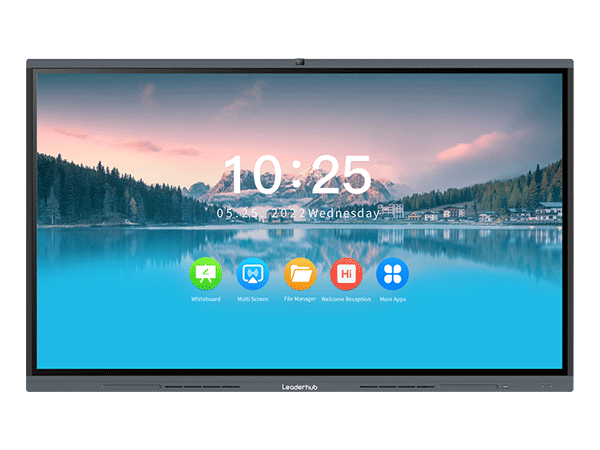Understand the differences between smart whiteboards and electronic whiteboards

When it comes to interactive display systems, two popular options that often come to mind are smart whiteboards and electronic whiteboards. While both technologies offer advanced capabilities and enhance collaboration in a variety of environments, there are distinct differences that set them apart. In this article, Leaderhub only whiteboard brand owner will take an in-depth look at the features, functions, and benefits of each type of whiteboard (i.e., smart whiteboard and electronic whiteboard).
1. Smart whiteboard
Smart whiteboards, also known as interactive whiteboards, combine the functionality of traditional whiteboards with the advanced technology of computers and touch screens. These whiteboards provide a more interactive and immersive learning or presentation experience. Let’s explore some of the notable features of smart whiteboards:
Touchscreen capabilities: Smart whiteboards allow users to interact directly with the screen using touch gestures, such as tapping, swiping, or zooming in and out. This feature enhances engagement and makes content action easier.
Internet Connection: Unlike electronic whiteboards, smart whiteboards usually come with a Wi-Fi or Ethernet connection. This enables users to access online resources, stream video, and collaborate remotely in real time.
Software integration: Smart whiteboards often come with pre-installed software or are compatible with third-party applications. These applications enhance the functionality of whiteboards and allow users to easily annotate, save and share their work.
2. Electronic whiteboard
Electronic whiteboards, also known as digital whiteboards, have display functions similar to smart whiteboards, but lack an integrated computer system. They are designed to mirror the functionality of traditional whiteboards while adding additional functionality to enhance collaboration. Let’s explore some of the key features of electronic whiteboards:
Display technology: The electronic whiteboard uses an LCD or LED screen to provide a clear and bright display. Their ability to render high-resolution visuals and multimedia content ensures that presentations or courses are visually appealing.
Connectivity options:While electronic whiteboards lack built-in Internet connectivity, they typically offer a variety of input/output options, including HDMI, VGA, USB, and Bluetooth. These connection options allow users to connect external devices such as laptops or cameras to the whiteboard.
Easy to install and maintain: Electronic whiteboards are generally easy to install and require little maintenance. Since they do not have an integrated computer system, there is no need for regular software updates or troubleshooting.
All in all, smart whiteboards and electronic whiteboards offer clear advantages based on individual needs and preferences. Smart whiteboards excel at providing interactive, multi-functional platforms with internet connectivity and software integration. Electronic whiteboards, on the other hand, focus on providing high-resolution display capabilities and ease of installation. Understanding the differences between these two types of whiteboards is critical to making an informed decision for educational institutions, businesses, or any other environment that requires an interactive display system.

